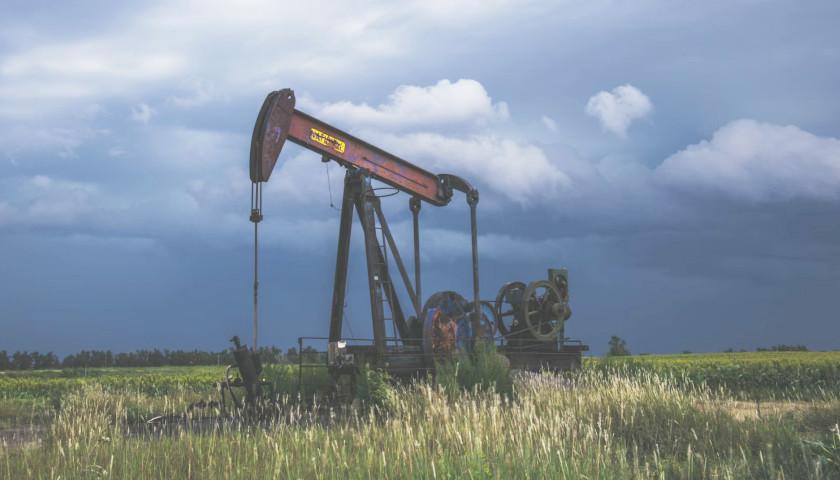by Bethany Blankley
Fourteen U.S. energy groups have called on the Biden administration to prioritize U.S. energy production and American’s energy needs by developing fair and consistent federal leasing regulations.
They submitted comments to the U.S. Department of the Interior’s Bureau of Land Management (BLM) over a newly proposed Fluid Mineral Leases and Leasing Process rule. The rule implements changes related to royalty rates, rentals, and minimum bids for BLM-issued oil and gas leases and updates bonding requirements for leasing, development and production.
BLM argues, “many of the program’s regulatory requirements are outdated, do not adequately protect the fiscal interests of the American public, and do not promote leasing practices that are consistent with diligent development requirements and multiple-use and sustained-yield principles.”
However, the energy groups argue the rule “overreaches its statutory authority and could have a damaging impact on U.S. energy security and the economy.” It also changes federal policy that disregards “Congress’ and multiple courts’ rejection of the Administration’s recent attempts to dramatically curtail federal oil and natural gas leases.”
The rule also rejects “existing robust planning and environmental review processes,” the groups argue, which instead enhances “BLM discretion to constrain onshore access – both procedurally and on a case-by-case basis.” It may “compromise the Administration’s environmental goals by creating greater dependence on foreign sources for American energy needs” instead of prioritizing domestic production, they add.
“Our nation and the world will continue to need reliable, affordable oil and natural gas to grow our economy, power our communities and serve as the foundation for broader opportunities for decades to come. Oil and natural gas production on public lands is a crucial part of the nation’s program for energy security and economic strength,” Holly Hopkins, vice president of Upstream Policy with the American Petroleum Institute, said. “Because of the vital importance of energy production on public lands, overreaching land management regulations place our domestic energy supply at risk.”
API recently published a new economic analysis of the current onshore leasing program, which found that in fiscal 2022, onshore federal oil and natural gas development supported nearly 250,000 jobs, generated $19.4 billion in labor income, and contributed $36.7 billion to GDP.
This was as oil production on federal lands averaged 1.2 million barrels per day and marketed natural gas production averaged over 9 billion cubic feet per day.
If the industry wasn’t hamstrung by the Biden administration halting lease sales, changing the terms or its ongoing regulatory uncertainty, the U.S. could become an even greater energy powerhouse, expand job creation, and generate more in income and GDP to reverse inflationary losses, the U.S. oil and natural gas industry argues.
Between fiscal 2013 and fiscal 2022, oil and natural gas production on federal lands generated a total of $35 billion in disbursement revenue from bonuses, rents, and royalties, averaging approximately $3.6 billion a year, API’s analysis found.
The majority of the disbursement revenue, 53 percent, totaling over $19 billion, funded the federal government or federal programs. State and local governments received 47 percent of the disbursement revenue totaling $16 billion, according to its analysis.
Supporting domestic production would increase these financial contributions, the industry argues, benefiting all Americans.
In fiscal 2022, the oil and gas industry in the five highest producing states leasing on federal land supported over 170,000 jobs in their states and over 75,500 jobs in other states.
The majority of employees working on federal lands in fiscal 2022 were in New Mexico, totaling 105,300. Two counties in southeast New Mexico and several in west Texas in the Permian Basin produce the majority of oil and natural gas in the U.S. The Permian Basin is also leading the U.S. in decreased methane emissions.
The state with the second greatest number of industry employees working on federal land is Wyoming with 24,400 jobs, followed by Colorado’s 21,000 jobs, Utah’s 11,200 jobs and North Dakota’s 10,000 jobs.
The Texas oil and natural gas industry, which leads the U.S. industry in job creation and production, and broke records in nearly every category in 2022, isn’t reliant on federal land lease sales because production in Texas occurs on private land.
Joining API in submitting comments to the proposed rule change were the Alaska Oil and Gas Association, American Exploration and Production Council, Colorado Oil & Gas Association, West Slope Colorado Oil and Gas Association, Independent Petroleum Association of America, Montana Petroleum Association, New Mexico Oil and Gas Association, North Dakota Petroleum Council, Petroleum Alliance of Oklahoma, Permian Basin Petroleum Association, Utah Petroleum Association, Western States Petroleum Alliance and Petroleum Alliance of Wyoming.
– – –
Bethany Blankley is a contributor to The Center Square.








